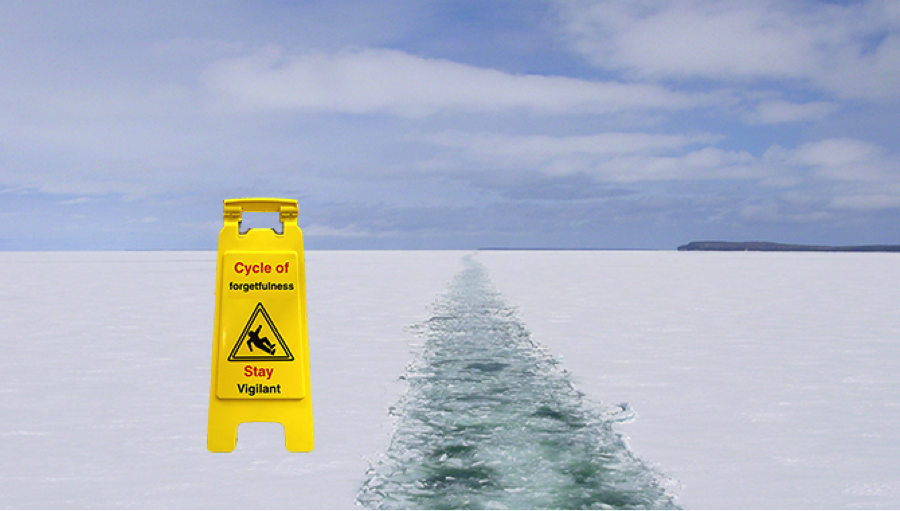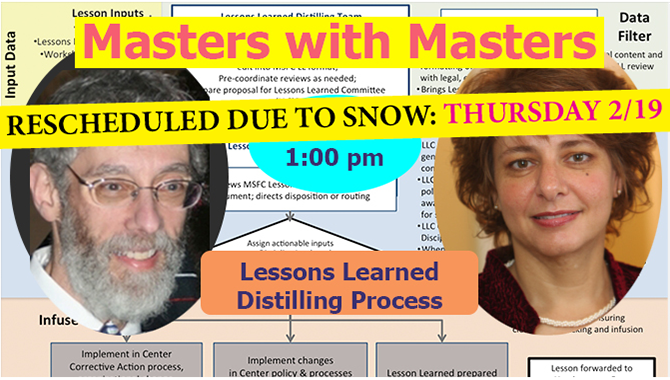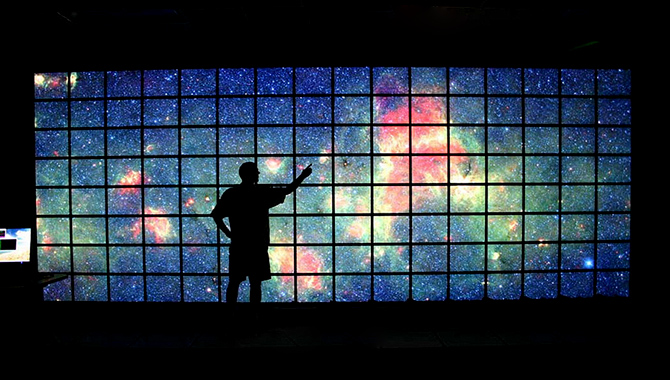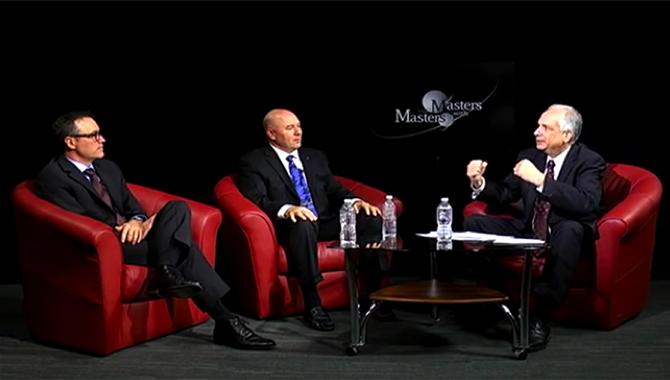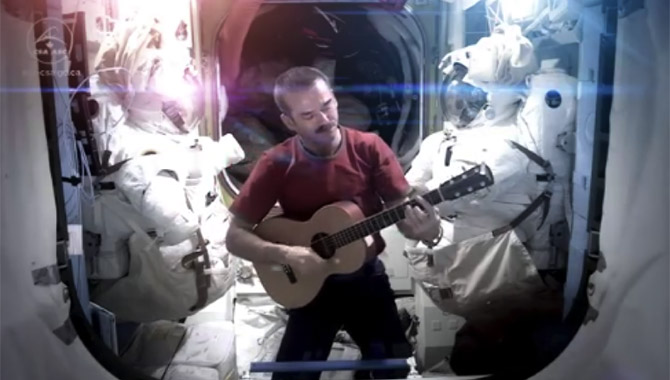
After 2,336 orbits, 62 million miles traveled, Canadian astronaut Chris Hadfield returned from the International Space Station as a rock star of sorts. His recording of a cover of David Bowie’s “Space Oddity” quickly went viral
Photo Credit: Chris Hadfield
Singer and songwriter David Bowie—aka Ziggy Stardust—once admitted that many of his biggest mistakes occurred when he tried to please an audience.
Bowie, a performer of stage and screen, certainly did please audiences, selling over 140 million records worldwide and playing the likes of Andy Warhol, Pontius Pilate, and Nikola Tesla in movies. He was a master of a score of guises and of a dozen instruments. For over half a century, he reinvented and resurrected himself, often into identities that opposed norms and celebrated nonconformity.
“I think it all comes back to being very selfish as an artist,” the interview-shy Bowie once admitted. “I mean, I really do just write and record what interests me and I do approach the stage shows in much the same way.”
He knew what interested him. This set him apart from the crowd.
With In Good Company: How Social Capital Makes Organizations Work, authors Don Cohen and Laurence Prusak tackle many issues and strategies related to social networks and knowledge sharing within organizations. They point out that too much cohesion and commitment within a single community can be problematic. Clannish behavior and the stifling of creativity are two concerns facing otherwise strong organizations where networks of knowledge sharing and a sense of a community are robust and beneficial.
“Most of the valuable creativity in organizations comes out of communities because their members support each other in exploring what interests them. Too much insistence on having them think more about the organization may destroy that creativity. Aligning communities with organizational purpose without destroying their uniqueness is an important organizational challenge… Sometimes, too, an entire organization becomes so cohesive that it can be made rigid by a kind of “groupthink”—self-reinforcing beliefs that maintain a firm hold on the organization until the outside world proves them wrong…”
Recently, Administrator Charlie Bolden shared a concern with NASA senior leadership: when he goes to the centers, he is hearing from some employees that they are afraid to raise dissenting opinions within the agency. Bolden believes it is beneficial to have a policy to encourage dissenting opinion, but it is even more important that our behaviors are supporting open dialogue without a fear of retribution. Bolden indicated that NASA should be a model for encouraging open exchange and dissent. Those who are making decisions should actively solicit dissenting opinions; dissenting opinions and diversity of thought are essential to decision-making.
Policy can state that the dissenter should be treated in a fair manner, never face reprisals or retribution, and the pathway of the dissenting opinion should move equitably through Technical Authority (not Programmatic Authority pathway). However, even with a policy, it is not often easy to be a dissenter or to even express a dissenting opinion. This is where organizational silence sucks the air out of the room. In space, no one can hear you disagree. It is not unheard of that members of an audience attending a forum on organizational silence admit that they are afraid to ask questions. It is often helpful when managers model listening to the workforce as a means to convince the workforce that they can speak their minds without repercussions.
One of the more famous examples of the dangers of not voicing a dissenting opinion is the sinking of Vasa, a Swedish Battleship that sank on its maiden voyage. In 1682, King Adolphus was anxious to see is heavily ornamented and heavily cannoned ship set sail as the new flagship of his fleet. However, back at the shipyard, the king’s subjects were afraid to bring up the structural issues concerning weight and size of the Vasa to the king. Consequently, within a thousand yards of setting sail, and in view of hundreds there to cheer her, she sank.
Goddard Space Flight Center’s Chief Knowledge Officer, Dr. Ed Rogers, wrote a Vasa Case Study and has facilitated discussion on what can be gleaned from its sinking. Recently, Kennedy Space Center’s Chief Knowledge Officer, Dr. Michael Bell, conducted a case study discussion. These activities afford this dramatic story to drive home the importance of utilizing sound engineering principles and making your voice heard.
It may be hard to imagine David Bowie not being famous. His first major hit in the US and the UK was “Space Oddity” during the summer of 1969, released contemporaneously within the moon landing. In his first hit, he sings as the astronaut “Major Tom” (who is floating in a most peculiar way), and from his new point of view in space, he sees that the stars look very different. Bowie, as an artist, knew intuitively to say what he was thinking and not what he thought others wanted to hear. As if speaking to those who do not want to hear anything with which they may not agree, Bowie said, “Tomorrow belongs to those who can hear it coming.”






